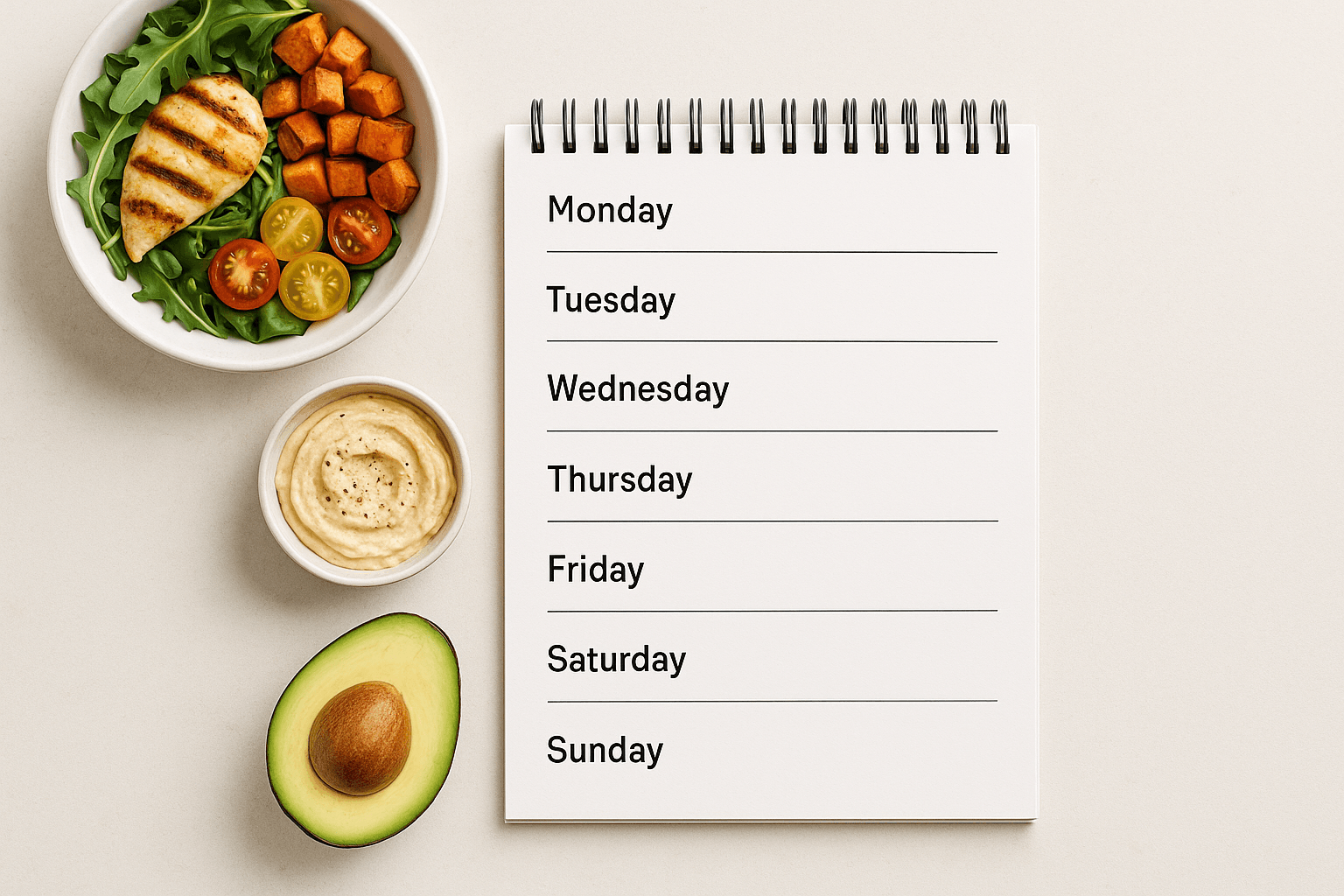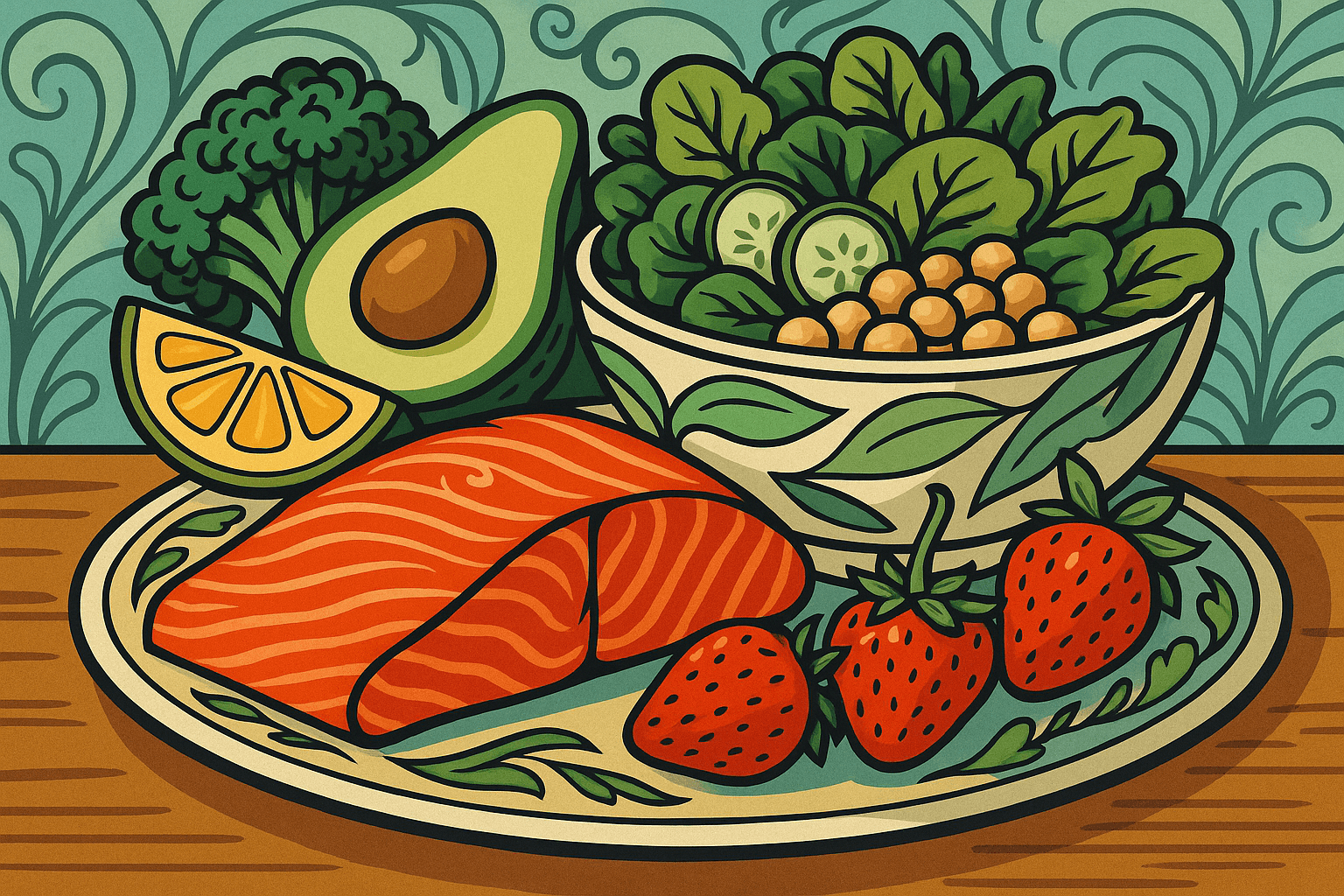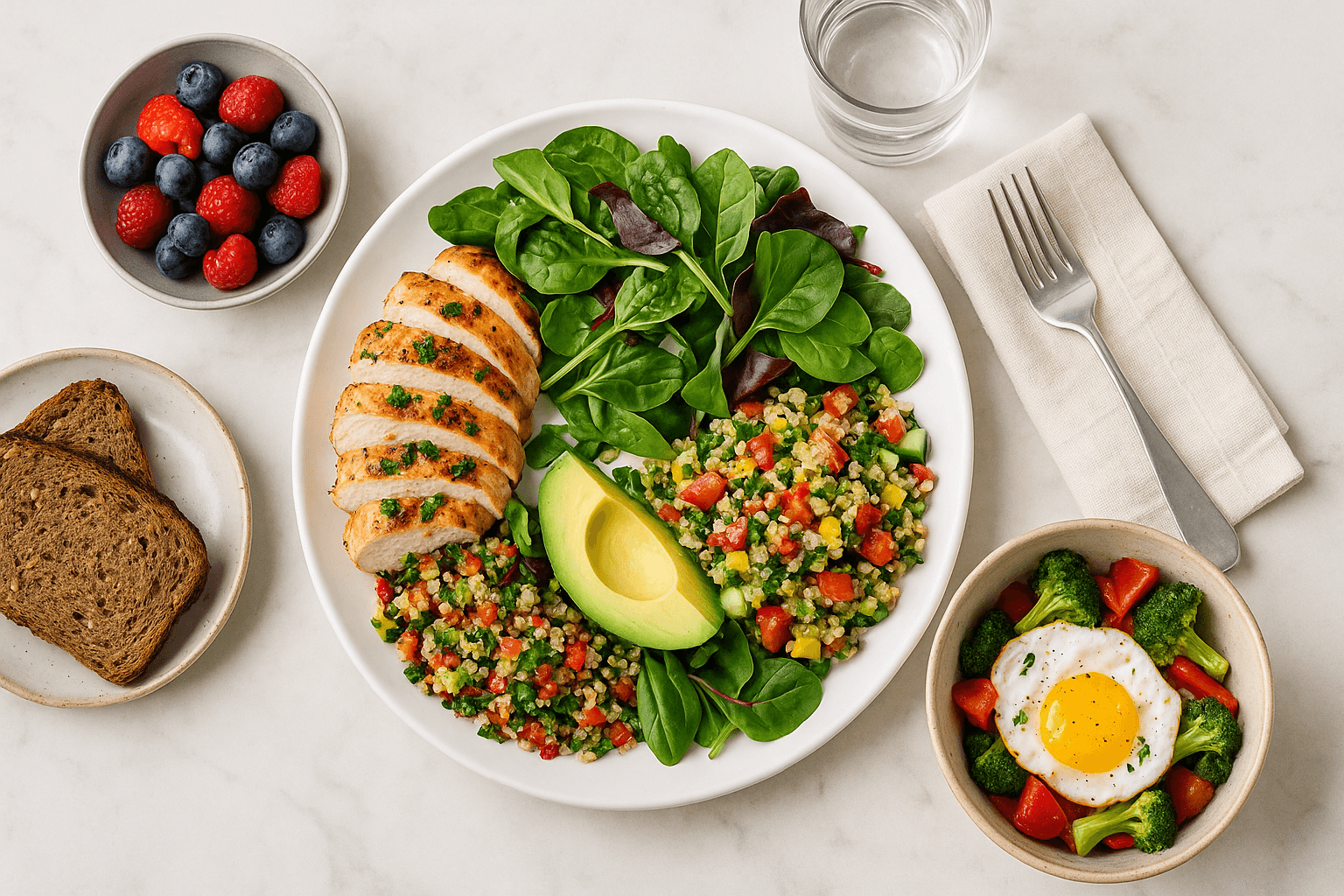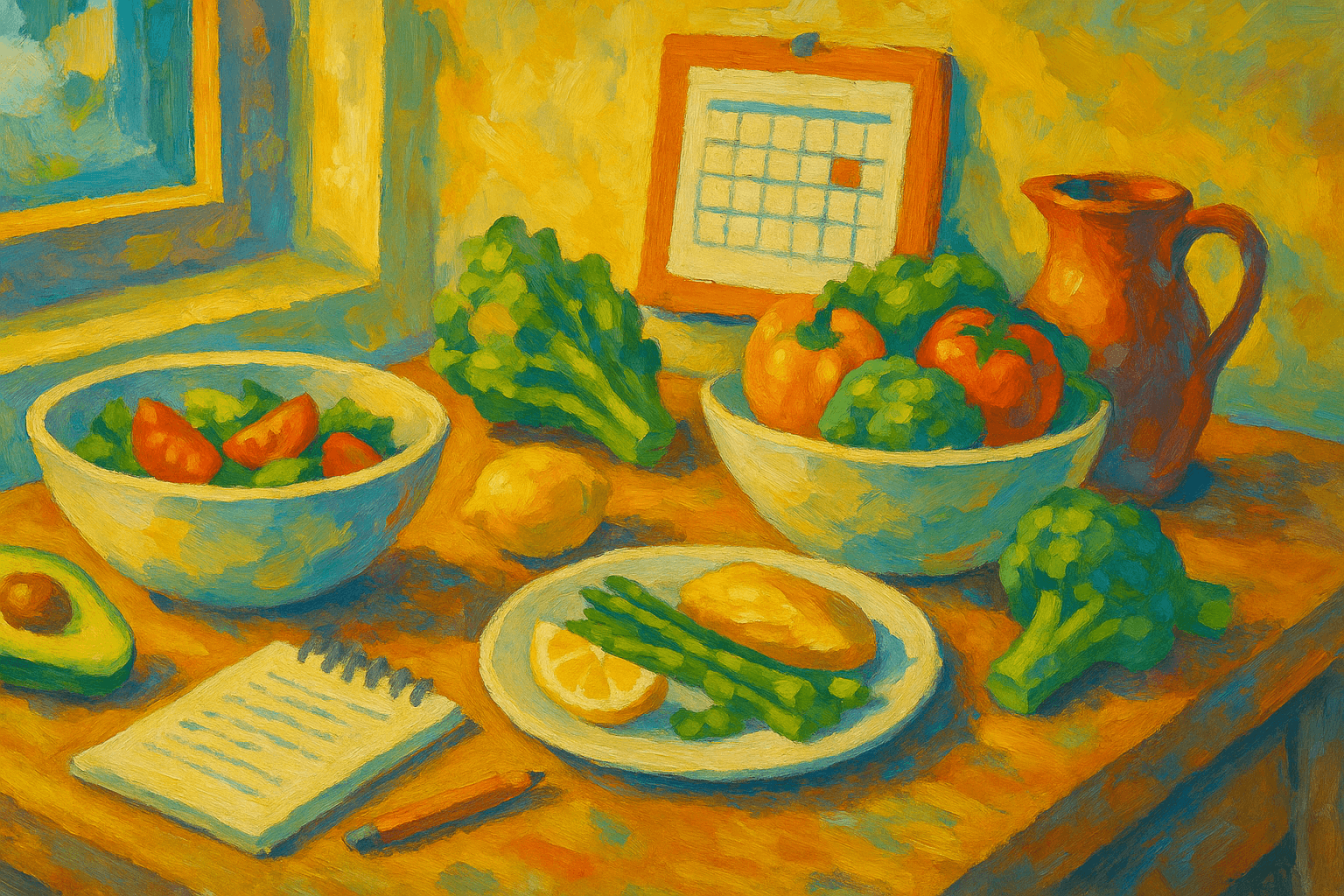Meal Planning for Energy, Control, and Confidence: How to Build a Week of Healthy Meals That Work
Published on June 11, 2025

Meal planning isn’t just for food bloggers — it’s for anyone who wants more energy, less stress, and better health. A simple plan can help reduce impulsive choices, save time and money, and boost your nutrition.
Why Meal Planning Works (and Isn’t Diet Culture)
Meal planning is about:
Reducing decision fatigue
Making healthy choices easier
Saving time and money
Boosting nutrient diversity
Preventing food waste
It’s not about restriction — it’s a tool for freedom and confidence.
The 3-Step Meal Planning Structure
Anchor meals
Weekly variety zones
Smart prepping
You don’t need 21 meals — just a few reliable dishes you can mix and match.
Step 1: Choose Your Anchors
Pick 2–3 breakfasts, 2–3 lunches, and 3–4 dinners:
Breakfasts: Overnight oats, veggie omelet, Greek yogurt parfait, protein smoothie
Lunches: Lentil soup, quinoa salad, hummus wrap, grilled chicken bowl
Dinners: Stir-fry, baked fish and vegetables, tofu with rice, chickpea pasta
Include 1–2 “lazy” options for low-energy days like avocado toast or frozen veggie stir-fry.
Step 2: Build Your Plan and Grocery List
Create a grid with meals for each day. Use your anchors and rotate in new meals weekly.
Make a categorized grocery list:
Produce
Proteins
Whole grains
Pantry staples
Keep a “use me up” list to reduce waste. Base plans on what’s in season or on sale.
Step 3: Prep Smart, Not Hard
Use a short weekly session to prep:
Cook grains
Roast vegetables
Boil eggs or cook protein
Chop fruit, portion snacks
Also helpful:
Make a sauce (tahini-lemon, pesto)
Wash greens
Measure toppings like nuts/seeds
Double dinner portions for leftovers
Weekly Sample Meal Plan
Monday
B: Veggie omelet + whole grain toast
L: Lentil salad with sweet potatoes
D: Tofu stir-fry with broccoli + brown rice
S: Apple + almond butter
Tuesday
B: Oats with chia + berries
L: Quinoa chicken bowl + greens
D: Baked salmon + roasted cauliflower + wild rice
S: Greek yogurt + walnuts
Wednesday
B: Yogurt parfait with fruit + granola
L: Lentil wrap (leftovers)
D: Turkey chili with beans + corn
S: Cottage cheese + cucumber
Thursday
B: Green smoothie
L: Hummus wrap + quinoa salad
D: Sheet-pan tofu with carrots + zucchini
S: Boiled egg + cherry tomatoes
Friday
B: Steel-cut oats + cinnamon + apples
L: Kale and chickpea noodle soup
D: Chicken fajitas with peppers + onions
S: Dark chocolate + almonds
Saturday
B: Scrambled eggs + mushrooms + avocado toast
L: Veggie soup + side salad
D: Veggie burger + sweet potato wedges
S: Trail mix + orange
Sunday
B: Banana-peanut butter pancakes + strawberries
L: Tuna salad with lentils on greens
D: Chickpea curry + spinach + brown rice
S: Rice cakes + almond butter + chia
Tips to Stick With It
Repeat meals across the week
Leave a night open for leftovers
Keep freezer back-ups (soups, veggie burgers)
Theme nights: Meatless Monday, Taco Tuesday
Stay flexible and adapt as needed
Celebrate small wins — consistency matters more than perfection
Final Thoughts
Meal planning is not a chore — it’s your ally. It helps you automate smart choices, free up mental space, and support your health journey.
Start with 3–4 planned days
Choose meals you actually enjoy
Use your plan to energize, not restrict
The goal isn’t more willpower — it’s better systems. A solid meal rhythm helps everything else fall into place.








